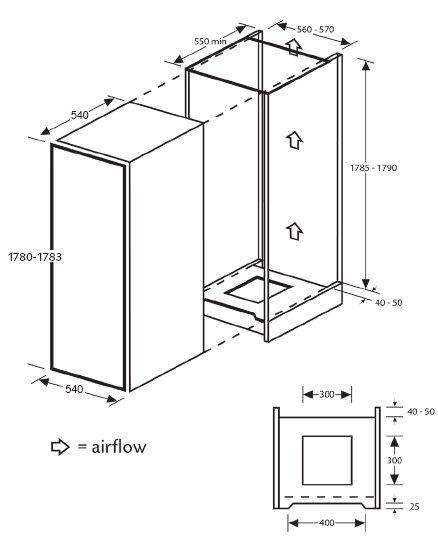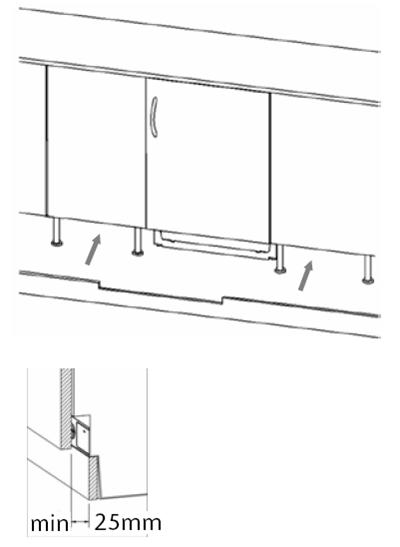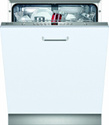Refrigeration Installation Advice
The main consideration when installing any refrigeration unit into a fitted kitchen is ventilation. The heat removed from the cooling compartment needs to be dissipated into the atmosphere. Incorrect ventilation can lead to premature compressor failure, excessive power consumption and total system failure. For products intended to be installed into a tall housing unit, the following requirements need to be met:

The minimum requirements are specified in the instructions, with the diagram showing best practice
The open channel at the rear is clearly shown. For the correct operation of the appliance it is important that the top of the housing unit is not blocked off. A channel depth of 40-50mm is normal with most units.
A hole is shown in the base shelf of the unit; this allows air to be drawn over the compressor & heat exchanger.
Some installers fit a decorative plinth vent. In most cases this is not required, but is a welcome aesthetic addition.
As a rule, the more air can get in, the better and more efficient the operation of the product.
With built-under products, it is important that the instructions provided with the product are followed. Under no circumstances is the ventilation opening at the base of the product to be blocked; as such, it may be necessary to cut out a section of plinth, or fit decorative plinth vents to ensure the openings are not blocked. Failure of refrigeration products due to lack of adequate ventilation may invalidate the warranty.

In the diagram the plinth is shown cut down by 25mm to allow the appliance to vent.
The diagram also shows the vent cover correctly adjusted, by moving it into line with the plinth.
The instructions provided with the product provide specific information on installation.
There are common issues associated with building combination or tall larder units into housing units, these are: -
- Ensure that the appliance is positioned on a level shelf. Otherwise, the product will be installed at an angle and this will cause issues with the door seal, which can lead to poor performance or excess ice build up.
- Do not push the appliance too far back into the unit. This leads to the same issue as described above. When the cabinet doors are closed, there should be a gap of 2 to 3mm between the door and the cabinet end supports.
- Always ensure that the sliders and brackets are positioned correctly and lined up. If not, there may be a squeaking or creaking noise when the door is opened.
- Freezer units can develop a vacuum inside the cooling compartment. Ensure the fascia handles are fixed well to prevent handle breakage.
Other Considerations When Handling Refrigeration and Wine Coolers:
The oil in the compressor can flow into the system pipework and can lead to irreparable blockages. It is best practice to leave any refrigeration unit upright for 24 hours before running it for the first time; this allows any oil to settle back into the compressor.
Never transport refrigeration units lying down, unless absolutely necessary.
Feet on Built-Under Products:
The feet on built-under products can be broken if the appliance is pushed into location with the feet fully extended. It is advisable to install these units on a piece of worktop or skids so that the feet are not fully extended.
Important!
Do not wind the feet out so much that the unit is forced against the worktop; the feet should be raised just enough so that the top of the unit is almost touching the underside of the worktop. The fixing screws provided will support the appliance in place.
Electrical Connection:
All refrigeration units are supplied with a 13A fused plug; this may be removed if required, but this is not recommended. Issues arising from this may invalidate the warranty.
It is important that the mains connection is accessible after installation so that the appliance can be isolated in the event that a fault develops. Never install the socket behind the appliance as it must be accessible after installation and can prevent the appliance from being installed.





















